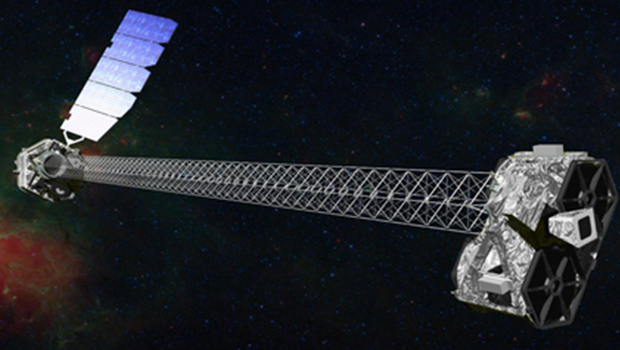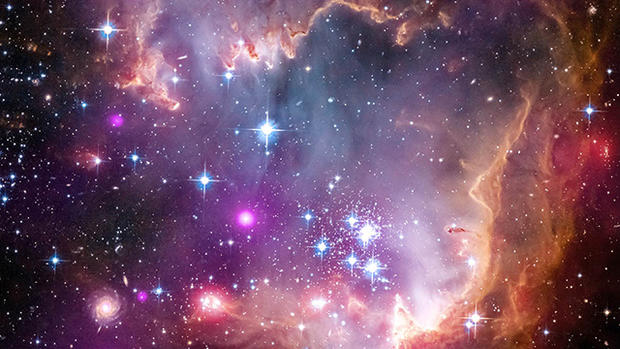NASA X-ray telescope sheds new light on supernova, death of a distant star
A space-based X-ray telescope has detected the glow of radioactive titanium created in the catastrophic death throes of a distant star, shedding new light on the mechanisms that may be responsible for destroying massive suns and creating the heavy elements that give the cosmos its substance, scientists said Wednesday.
Launched in 2012, NASA's Nuclear Spectroscopic Telescope Array, or NuSTAR, satellite is sensitive to high-energy X-rays generated in extremely violent cosmic events. In this case, the telescope detected radiation released in the decay of titanium-44 into calcium-44, a nuclear transition that occurred during the collapse and detonation of a massive star some 11,000 years ago.
Light from the supernova, known as Cassiopeia A, or Cas A, is believed to have reached Earth in 1671. Visible light images of the supernova remnant today show a vast, spherical cloud of expanding debris stretching across 10 light years as viewed from Earth.
"The result we're unveiling today is the first ever map of radioactive material in the remnants of a star that exploded in an incredibly powerful event called a supernova," said Fiona Harrison, NuSTAR principal investigator at the California Institute of Technology.
"This is helping us to untangle the mysteries surrounding how stars explode and in particular, what's happening at the very heart of the explosion. No other telescope could make this map."
But eventually, if a star is massive enough to begin with, only iron is left in the core and fusion stops for good, triggering a final gravitational collapse and the birth of an ultra-dense neutron star or a black hole. In either case, material from the outer regions of the dying sun is pulled inward, crashes into the collapsing core and rebounds, triggering a cataclysmic shock and a flood of penetrating neutrinos.
But in computer simulations, the shock wave can stall out, preventing a supernova from proceeding.
One possible explanation is that powerful jets can form when a spinning star collapses and then blow the sun apart. Another model holds that the core collapse is not symmetrical and that it "sloshes" about, creating bubble-like structures that penetrate the shock front and give the neutrinos a way to blast out.
"You've got a pot of water that you're boiling to make pasta and you're heating up the water and that makes bubbles that rise up and the top of your boiling water sloshes around a little bit," he said. "So what's going on in the star is the star is collapsing, and right at the center ... you get a ton of pressure because the whole star is collapsing in on itself and it makes tiny particles called neutrinos."
The neutrinos, he said, heat the material just behind the shock front and "when that happens, that's where you get your big bubbles formed, at the very center of this collapsing star."
"They come up and they make ripples in the shock wave," he said. "When that happens, it sort of pushes the material out of the way just like the bubbles in your pot on your stove top do. In this case, they're letting the shock wave out and the shock wave tears apart the rest of the star."
Co-author and NuSTAR investigator Steven Boggs at the University of California-Berkeley said the Cas A observations let scientists study "the fundamental physics of the nuclear explosion at the heart of the supernova like we have never been able to do before."
"Stars are spherical balls of gas, and so you might think that when they end their lives and explode, that explosion would look like a uniform ball expanding out with great power," he said in a news release. "Our new results show how the explosion’s heart, or engine, is distorted, possibly because the inner regions literally slosh around before detonating."
The big bang explosion believed to have given birth to the universe 13.8 billion years ago created hydrogen, helium and a handful of light isotopes. Everything else was created in supernova explosions like the one that ripped apart Cas A, providing the raw material for future generations of stars and planets.
"You should care about this," said Robert Kirshner, a supernova expert at the Harvard-Smithsonian Center for Astrophysics. "Supernovae make the chemical elements. If you bought an American car, it wasn't made in Detroit two years ago, the iron atoms in that steel were manufactured in an ancient supernova explosion that took place five billion years ago.
"NuSTAR shows the titanium that's in your Uncle Jack's replacement hip was made in those explosions, too. So we're all stardust, and NuSTAR is showing us where we came from, including our replacement parts. So you should care about this. And so should your Uncle Jack."



